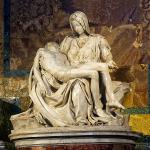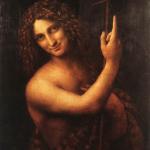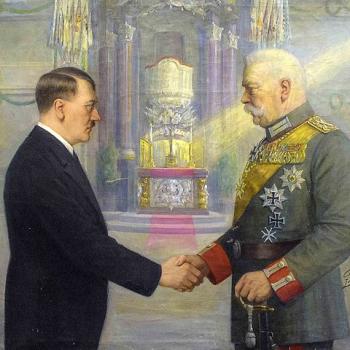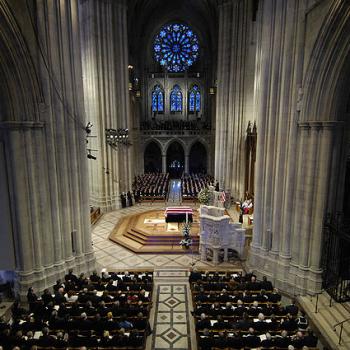The fallout from the recent Michelangelo’s David controversy continues. If you’ve spent the past month in a hermitage, here’s the story: The principal of a Florida Christian school lost her job because some parents were furious about an art appreciation lesson. The lesson included a photograph of the famous statue of the biblical David by the Renaissance artist Michelangelo. Some parents considered the statue “pornographic.” The lesson including the statue was for sixth graders, children aged 11 to 12, according to several news stories. This episode became international news and the object of many jokes about unsophisticated rubes in Florida.
More recently, the very conservative Hillsdale College in Michigan ended its partnership with the Florida school, Tallahassee Classical School. Tallahassee Classical held a license to use Hillsdale’s curricular materials. Hillsdale revoked the license.
This was hardly the first time the statue’s famous nudity has caused controversy, however. Even Leonardo da Vinci grumbled that Michelangelo could have carved a loincloth on the David. Michelangelo’s David is possibly the most iconic and admired statue in history, but it has also drawn plenty of objections. Let’s review.
Michelangelo’s David: The Backstory
In 1501 the young artist Michelangelo di Lodovico Buonarroti Simoni (1475–1564) returned to his native Florence from Rome. He had recently completed an exquisite marble Pietà for the Old St. Peter’s Basilica, and his reputation was growing. After his homecoming he was asked by the Opera del Duomo, or the vestry committee of the Florence Cathedral (although one source I found says it was the Wool Guild) to carve a statue of David. The statue was intended to be displayed on the roof of the cathedral with other figures from the Old Testament.
Michelangelo was given a large block of marble to sculpt. The block had been sitting in an open courtyard for at least 25 years, rejected by other artists for having too many imperfections. Michelangelo decided he could make it work. From the large block of marble he created a large statue — 17 feet tall. He worked in the open courtyard, carving marble even in the rain. Even so, records indicate no one saw what he was doing until the statue was nearly finished. And then in January 1504, he summoned the members of the vestry committee. This select group was first to see Michelangelo’s David.

The vestry committee agreed the statue was too beautiful — and also too large — to hoist to some place way above street level. Another committee was convened to find the best place to display David. This second group included Florentine officials and notable artists such as Leonardo da Vinci, Sandro Botticelli, and Giuliano da Sangallo. (And yes, it’s widely recorded that da Vinci thought the David should have had a loincloth.) Eventually this committee settled on the Piazza della Signoria, the main square of the city of Florence. This was only a half mile from Michelangelo’s workshop/courtyard, but it took 40 men four days to move the massive statue. It would remain on the Piazza della Signoria until 1873, when it was moved to its current location in the Galleria dell’ Accademia. A replica was made to stand in the Piazza della Signoria where the original stood.
The Story of David
Michelangelo chose to depict the young David who slew the giant Goliath. This is a story told in the Jewish Nevi’im and the Christian Old Testament, 1 Samuel 17. The story tells us that the Israelites and Philistines were at war. The armies were facing each other across a valley. Among the Philistines was a massive man named Goliath, who stood “six cubits and a span,” or nearly eight feet tall. Goliath came out every day to taunt the Israelites and challenge someone to fight him. “Choose a man and have him come down to me,” Goliath the Philistine said. “If he is able to fight and kill me, we will become your subjects; but if I overcome him and kill him, you will become our subjects and serve us.” This went on for forty days. No one dared take on Goliath.
David was a young man whose three older brothers served in the army of the Israelites. David stayed home to tend his father’s sheep. But one day the father told David to take food to his brothers, so he went to the front line. David couldn’t understand why no one dared take on Goliath. When he offered to do the job himself, at first the other men ignored him. But David persisted, and at last he got permission from King Saul to go forth to slay the giant. Saul dressed David in his own armor, and gave him a sword. But David found the battle gear too confining. He took off the armor and left the sword behind. He walked out to face the giant with only five stones and a sling.
And then, after some mutual taunting and shade throwing, David put one stone into the sling and hurled it toward the giant. The stone smacked Goliath in the middle of his forehead and killed him. David would eventually become king and write many psalms.
The Composition
Previous depictions of David the Goliath killer in art usually captured David in his moment of triumph, after Goliath had been slain. These scenes often included Goliath’s severed head. But Michelangelo chose to depict the moment before David hurled the fatal rock. David grasps the sling with his left hand (note that Michelangelo was left handed), and he is beginning to take a step forward with his left foot. His eyes are fixed on what we assume is Goliath. His face is confident and alert. His life and the future of Israel were at stake.

Although you may not notice it immediately, David’s head and hands are carved on a slightly larger scale than the rest of his body. Michelangelo assumed the statue would be placed on a roof someday. People would be looking up at it from some distance. Michelangelo wanted to be sure people could see the face and hands.
After the statue was in place in the Piazza della Signoria, Michelangelo added some gilding to parts of the masterpiece, although this has since worn off.
Public Reception, Plus Fig Leaves
David made its public debut during a particular interlude in the history of Florence. The infamous Medici family ruled Florence between the years 1434 to 1737, most of the time. But in 1494 the Medici were driven out of Florence, temporarily, by people who favored a republic. Florentines informally adopted the giant David as a symbol and protector of a city freed from tyranny. Still, shortly after the statue’s installation in the city square in 1504 a mob gathered and threw stones at it. Were they Medici supporters? Or art critics? Sadly, the republicans were defeated in 1512, putting the Medici back in power. From 1527 to 1530 the republicans made a brief comeback. When pro- and anti-Medici mobs rioted in the Piazza della Signoria in 1527, someone threw a bench at the David, breaking the left arm in three pieces. Obviously, it was repaired.
Later in the 16th century a metal loincloth of 28 fig leaves was strategically draped around the statue. It’s not clear to me when the metal loincloth was removed.
Over the years many replicas of the statue exhibited around the world have caused no end of discomfort. A copy of David gifted to Queen Victoria so disturbed Her Majesty that a detachable fig leaf was made for it, used only when the Queen might view the statue. In 1995 Israel refused the gift of a David replica from Florence, opting for a replica of a clothed David by Verrocchio instead. A large plaster replica of David exhibited in St. Petersburg in 2016 drew so much criticism that organizers of the exhibition proposed a “dress David” contest. Many other replicas around the world have been forcibly clothed or “fig leafed” to appease local prudery. So it’s not just Florida.
And on April 1, 2011, Pope Benedict XVI declared the David must be clothed to end the “depravity and nudity celebrated by the morally corrupt.” And then His Holiness wished everyone a happy April Fool’s Day.













